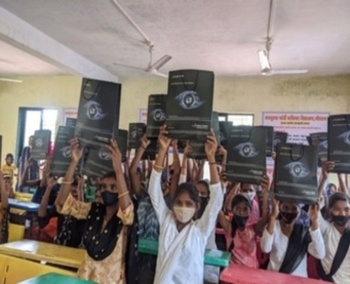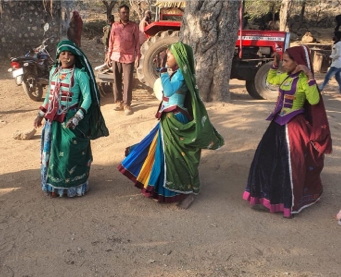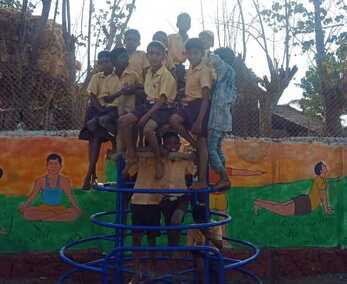Breaking the Cycle of Forced Migration with Sustainable Rural Livelihood Opportunities

People have always moved for all sorts of reasons – economic, political, social, or even environmental factors -ergo, migration. Rural people tend to migrate to urban areas looking for livelihood opportunities for a better future for themselves and their families. Forced migration is when people really don’t have a choice but to leave their homes, which can be very painful. But when it’s forced, it often traps folks in a vicious cycle of poverty, instability, and vulnerability. One of the best ways to tackle this problem is promoting sustainable rural livelihood opportunities.
Let’s take a closer look at this issue and see how creating these sustainable opportunities in rural areas can actually turn things around and really help communities thrive.
The causes of forced migration in India
India has a big rural population, with more than 65% of its people living in villages. But a lot of people from these rural areas are moving to cities, looking for better opportunities. So, what’s driving this forced migration?
- Economic disparities: Even though rural India is more into agriculture, farming is facing some tough times due to low productivity, poor irrigation, and not enough access to markets. Families often feel they have no choice but to head to the cities.
- Environmental degradation: India is quite vulnerable to changes in the environment, with climate change making things worse. With extreme weather events like floods and droughts becoming more common, many people in rural areas find themselves displaced.
- Land disputes and insecurity: In various rural regions, issues like landlessness and disputes over who owns what can lead to conflict and a sense of economic insecurity. For marginalized groups, especially those without land, the pressure can be overwhelming.
- Poor access to education and healthcare: Limited access to quality services means that many young people feel they have to migrate to cities for a shot at a better future. And when the youth leave, it’s like a double whammy – it weakens the already struggling local economies even more.
5. Conflict and political instability: In some parts of India, ethnic, religious, and political tensions can lead to people needing to flee their homes, looking for safety either within the country or even abroad.



What happens when forced migration occurs?
When forced migration happens, it has a lot of negative impacts – not just for the folks who are moving but also for the communities they leave behind.
- Loss of traditional livelihoods: A lot of migrants find themselves stuck in low-paying, informal jobs. They face exploitation, live in terrible conditions, and don’t have much in the way of social safety nets.
- Urban overcrowding: When a wave of migrants heading to the cities, it often leads to overcrowding. This makes life even harder for those already struggling in urban areas, dragging down the quality of life for everyone around.
- Social and psychological impact: Families and individuals go through serious trauma – losing their homes, leaving their communities, and facing an uncertain future can lead to a lot of stress and anxiety.
- Economic decline in rural areas: When people pack up and leave rural areas, it usually means a sharp drop in farming production and local businesses, which creates a cycle of poverty, which in turn just pushes more people to migrate.
- Stagnation in rural infrastructure – When more people migrate to urban areas, there is not much scope of development or infrastructure growth in rural areas.
- Reduced agricultural yield – When more and more farmers shift to urban areas, the percentage of people engaged in agriculture reduces, impacting food security for generations to come. Additionally, this would result in high food prices as their would be low availability of locally grown produce.
7. Climate change – Reduced agriculture means lower oxygen levels in the atmosphere, which in turn leads to worse climate conditions such as droughts.
The role of sustainable rural livelihood opportunities in breaking the cycle
Tackling migration is not just about making people stop moving; it’s about creating sustainable livelihood in India, especially in rural areas so that people can truly thrive where they are. Here are a few ways to do so, and answer the question – how to break forced migration in India?
- Empowering rural communities through skill development
A key way to boost sustainable livelihoods is by rolling out skill development programs that really enhance what rural people can do. By teaching new skills, these programs can help lessen the reliance on agriculture alone—diversifying income sources and building a sturdier rural economy.
- Promoting sustainable agriculture
In India, a sustainable livelihood often hinges on adopting eco-friendly farming practices that not only ramp up crop yields but also help conserve our natural resources. Techniques like organic farming, agroforestry, efficient water management, and soil conservation can help rural farmers adapt to the changes brought about by climate change while boosting productivity.
- Better access to resources and services
Having access to education, healthcare, clean water, and sanitation is very important if we want to cut down on migration. Consider this example, with their solar projects for rural areas, Project Chirag, an NGO for rural development, has facilitated better access to electricity, clean energy for cooking and even schools. This has made the lives of the rural areas better.
- Creating Local Employment Opportunities
If we focus on building up rural infrastructure – roads, local markets, small industries – we can actually create job opportunities right where people live. These jobs can be designed to meet the unique needs of rural people, whether that’s in farming, tourism, or even crafting.



Project Chirag: A beacon of hope for rural development
Project Chirag is an NGO working for rural development, and it’s a great example of how sustainable livelihood programs can help tackle the issue of forced migration. We provide skill training, improve access to healthcare and education, and encourage sustainable farming practices. It’s very impactful, especially when you consider the marginalized communities – people that are more likely to leave because of economic troubles or environmental issues.
We empower rural people by providing them sustainable energy sources, access to clean water and energy, and knowledge about environmental sustainability. They encourage the use of renewable energy, water conservation, and organic farming. They provide resources that allow these groups to participate in economic activities, which helps tackle those gender and generational gaps that often exist in rural settings. It’s all about creating a balance and giving everyone a fair shot at a better life.
Breaking the cycle of forced migration in India - A collective responsibility
Breaking the cycle of forced migration isn’t just a one-step solution. It’s going to take a whole team effort—think government, NGOs, the private sector, and the local communities –
✔ It’s all about creating a good environment for rural development – investing in rural infrastructure, giving farmers subsidies, and making governmental policies that actually support sustainable ways of living.
✔ NGOs like Project Chirag can roll out community-focused development programs and help empower the locals.
✔ The private sector can invest in rural businesses, help create sustainable supply chains, and promote tourism that’s responsible and beneficial for everyone involved.
✔ Local communities’ involvement is key to making sure development initiatives actually work and last over time.
So, when we all come together, we can really make a difference. Imagine a future where rural communities can thrive, where forced migration is just a thing of the past. With just a little donation for rural development, we’re not just improving the lives of countless individuals; we’re paving the way for a fairer and more sustainable future for everyone.


